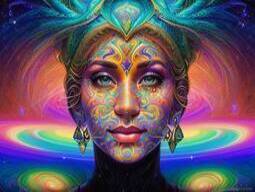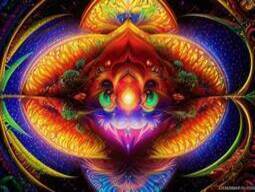The History and Evolution of the Psychedelic Culture
Modern psychedelic culture started in the 1950s and 60s, where people started exploring the use of psychoactive substances like LSD, psilocybin, and mescaline, for spiritual and therapeutic purposes. The counterculture movement in the United States during this time played a significant role in promoting the use of psychedelics.
In the 1970s, the war on drugs and increased law enforcement efforts led to the criminalization of psychedelics, causing the use and popularity of these substances to decline. However, the late 90s and early 2000s saw a resurgence in interest in psychedelics, primarily driven by new research and studies investigating the therapeutic benefits of these substances.
The recent years have seen an increasing number of countries decriminalizing and legalizing psychedelics for medicinal and therapeutic purposes, leading to the growth of a new psychedelic culture that focuses on the responsible use of psychedelics for personal growth and well-being.
Additionally, the internet and social media have enabled the formation of online communities that support the use of psychedelics and provide a platform for sharing information and experiences.
The history and evolution of psychedelic culture has been shaped by the changing attitudes towards psychoactive substances and the role they play in society. Despite the challenges posed by the criminalization of psychedelics, the recent advancements in research and technology have enabled the growth of a new, responsible, and inclusive psychedelic culture.
Impacted of the War on Drugs
The War on Drugs, declared by President Richard Nixon in the 1970s, had a significant impact on the development and growth of psychedelic culture in the United States. Prior to the declaration of the War on Drugs, the use of psychedelics, particularly LSD, had gained widespread popularity among the counterculture movement of the 1960s. However, the criminalization of psychedelics as a result of the War on Drugs led to the decline of the psychedelic culture in the country.
One of the primary impacts of the War on Drugs on psychedelic culture was the criminalization of the possession, sale, and use of psychedelics. This led to a crackdown on individuals and organizations involved in the distribution and use of psychedelics, including the arrest and prosecution of numerous individuals and the shutdown of several research projects investigating the therapeutic benefits of psychedelics.
The criminalization of psychedelics also resulted in a reduction of funding for research into the therapeutic benefits of these substances. This, in turn, hindered the progress of the field and limited the availability of information about the safe and responsible use of psychedelics.
Moreover, the War on Drugs resulted in a shift in public opinion towards psychedelics. The negative propaganda and sensationalized media coverage associated with the War on Drugs led to the development of a negative stigma around psychedelics, painting them as dangerous and harmful substances. This, in turn, further discouraged the use of psychedelics and hindered their integration into mainstream culture.
Driving Force Behind the Psychedelic Culture
The psychedelic culture of the 1960s was primarily driven by the counterculture movement due to several key factors.
First, the counterculture movement was characterized by a rejection of traditional values and a search for alternative forms of expression and experience. Psychedelics offered a new and unique form of experience that was not available through traditional means, making them an attractive option for those seeking something different.
Second, the cultural and intellectual climate of the time provided an ideal environment for the growth and development of the psychedelic culture. The counterculture movement was largely made up of young, educated individuals who were open-minded and curious about new ideas and experiences. The rise of the counterculture movement also coincided with a growing interest in Eastern spirituality and philosophy, which further fueled the use of psychedelics as a means of exploring spirituality and consciousness.
Third, the availability of new psychoactive substances, such as LSD, psilocybin, and mescaline, provided the perfect opportunity for individuals to experiment with new forms of experience and consciousness. The widespread availability of these substances, combined with a growing interest in the therapeutic benefits of psychedelics, contributed to their widespread use among the counterculture community.
Fourth, the political and social climate of the time also played a role in the development of the psychedelic culture. The counterculture movement was largely a response to the political and social changes happening in the world, such as the Civil Rights Movement, the Women’s Liberation Movement, and the anti-war protests of the Vietnam War. The use of psychedelics was seen as a means of challenging the status quo and expressing dissent against the political and social systems of the time.
Global Evolution of Psychedelics
In the early 1960s, the use of psychedelics was largely associated with the counterculture movement and was characterized by a focus on exploring consciousness and spirituality, as well as a rejection of traditional values and norms. During this time, the use of psychedelics was widely associated with the hippie movement and the Summer of Love in San Francisco.
However, by the late 1960s and early 1970s, the use of psychedelics began to decline as a result of increased government restrictions and criminalization. This led to a decrease in public interest and research into the therapeutic and spiritual benefits of psychedelics.
In the late 20th century, the use of psychedelics experienced a resurgence as a result of renewed interest in their therapeutic benefits. A growing body of research suggested that psychedelics could be used to treat a variety of mental health conditions, including depression, anxiety, and PTSD. This led to a resurgence of interest in psychedelics among medical professionals and researchers.
In recent years, the use of psychedelics has undergone a major transformation, with a growing focus on their use in medicine and therapy. The legalization of medical marijuana in several states has paved the way for the legalization of other psychedelics, such as psilocybin, for medical use. This has resulted in a growing number of clinics and retreat centers offering psychedelic-assisted therapy, and a growing number of clinical trials studying the therapeutic benefits of psychedelics.
In addition, the use of psychedelics has also undergone a revival in the arts and popular culture. Psychedelic-inspired art, music, and fashion have once again become popular, reflecting a growing interest in the aesthetic and spiritual benefits of psychedelics.


































